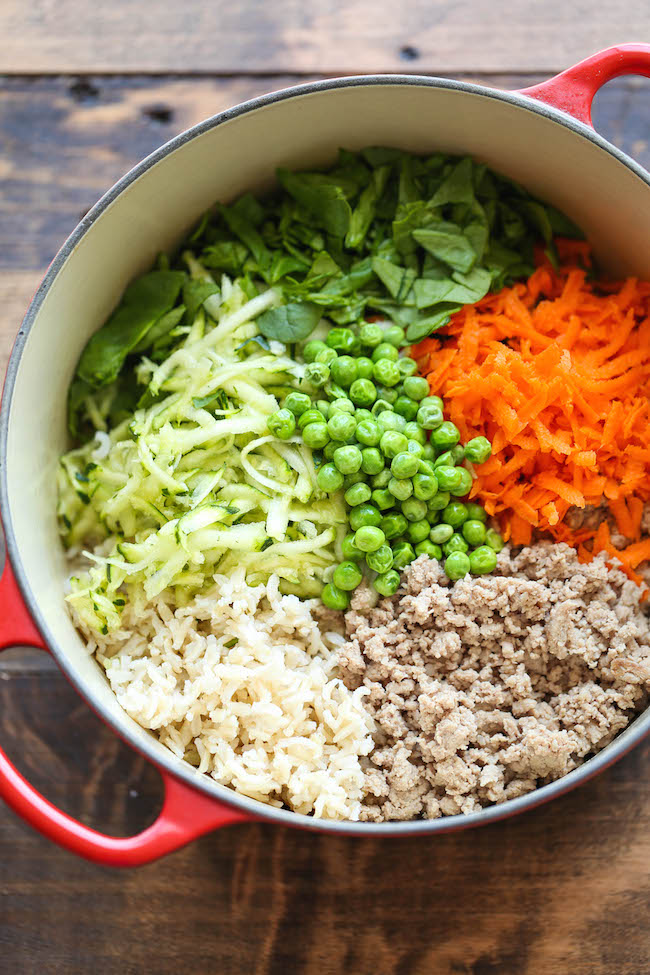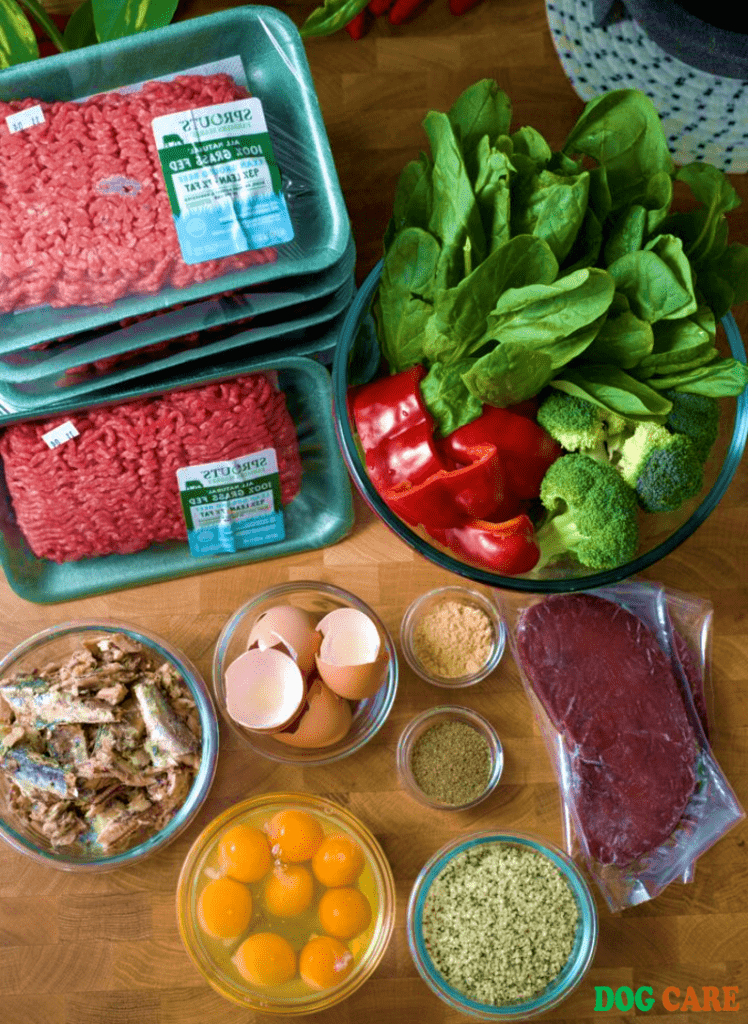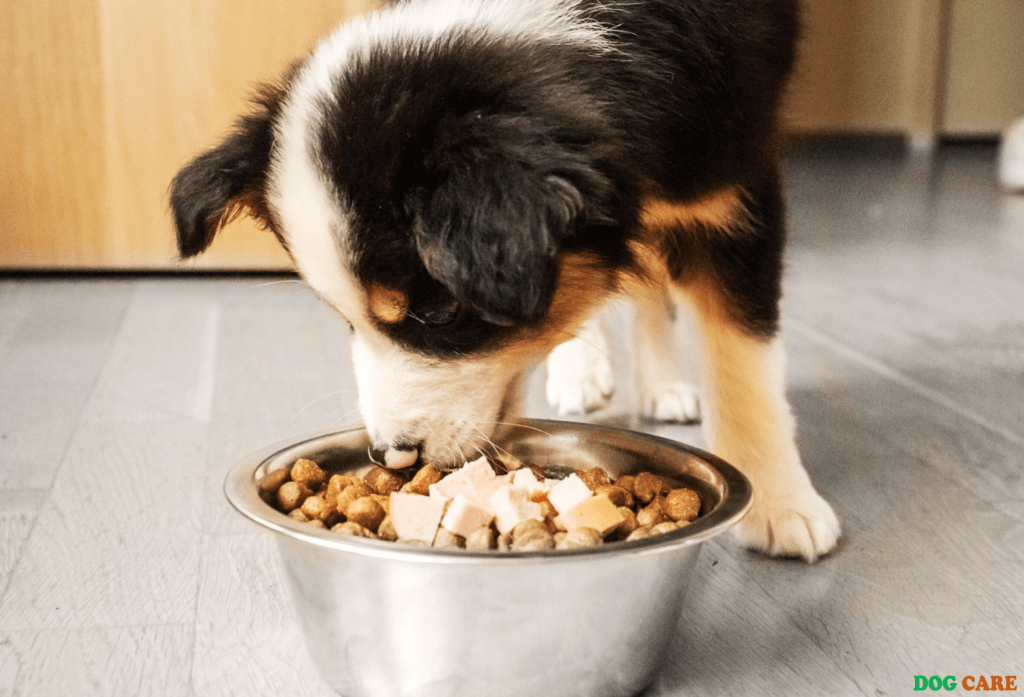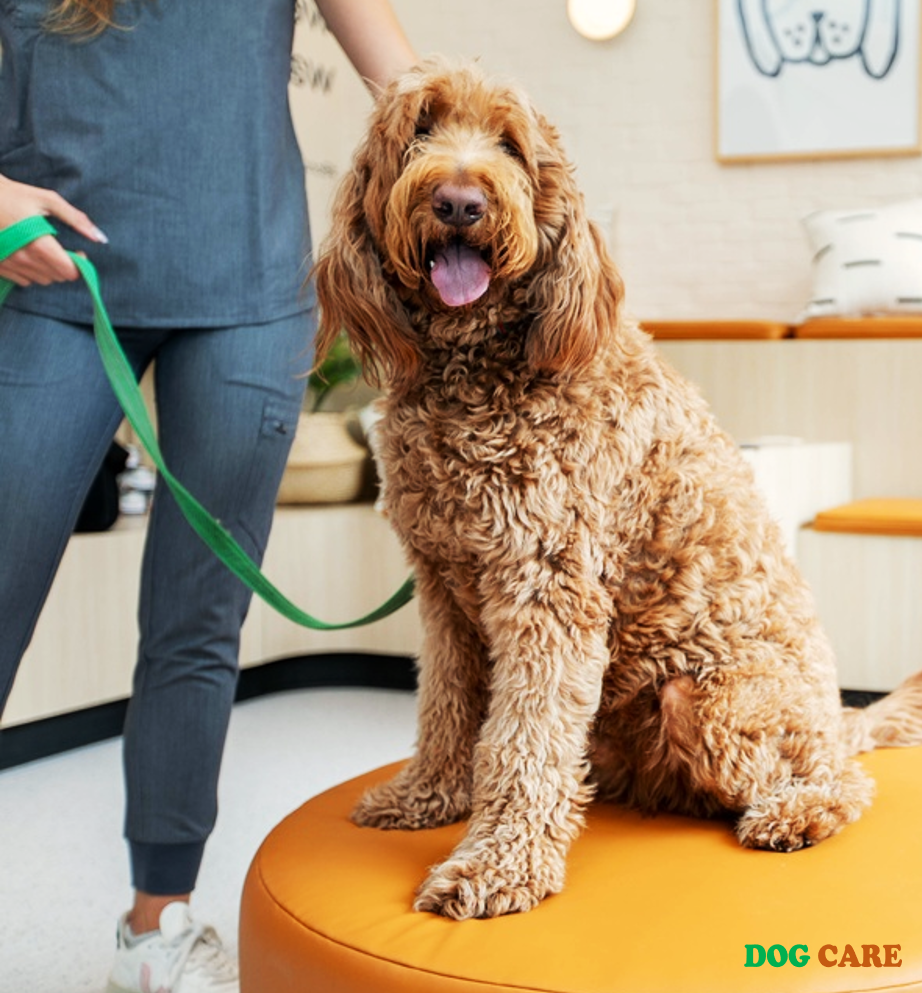Looking for homemade dog food recipes? Check out these easy and nutritious options for your beloved pet.
Ensuring that your dog gets the best nutrition is essential for their health and well-being. It’s important to provide them with a balanced diet that includes a variety of proteins, vegetables, and grains. By preparing homemade dog food, you have control over the quality and ingredients, enabling you to tailor the recipes to your dog’s specific needs and preferences.
Whether you’re looking to transition your dog to a homemade diet or simply add variety to their meals, these recipes are sure to keep your furry friend happy and healthy. Let’s explore some delicious and wholesome homemade dog food recipes that your pet will love.
Understanding The Benefits Of Homemade Dog Food
Many pet owners are now turning to homemade dog food as an alternative to commercial options. Understanding the benefits of homemade dog food can help you make an informed decision about your pet’s diet. From health benefits to cost-effectiveness, there are compelling reasons to consider making your own dog food at home.
Health Benefits
One of the primary reasons for the rising popularity of homemade dog food is its potential health benefits. By preparing your dog’s food at home, you have full control over the ingredients, allowing you to ensure that your furry friend receives a balanced and nutritious diet. Homemade dog food recipes often use high-quality, fresh ingredients that can contribute to better overall health, a shinier coat, improved digestion, and better weight management for your canine companion.
Cost-effectiveness
Contrary to the common misconception, homemade dog food can also be cost-effective in the long run. While the initial investment in purchasing quality ingredients may seem higher, it often proves to be more economical than constantly buying commercial dog food. Additionally, making your own dog food allows you to buy ingredients in bulk, which can help reduce the overall cost and minimize food waste.
Important Nutritional Considerations
When preparing homemade dog food, it’s crucial to consider important nutritional factors to ensure that your furry friend receives a well-balanced diet. By focusing on essential macro and micronutrients and avoiding potential allergens, you can provide your dog with the necessary nutrients for optimal health and well-being.
Essential Macro And Micronutrients
Balanced and nutritious homemade dog food should consist of essential macro and micronutrients to support your pet’s overall health and vitality. Incorporating a combination of carbohydrates, proteins, fats, and micronutrients is vital for meeting your dog’s nutritional needs. Here’s a breakdown of the essential nutrients that should be included in homemade dog food:
| Nutrient | Function | Sources |
|---|---|---|
| Proteins | Support muscle development and repair | Lean meats, fish, eggs, and legumes |
| Carbohydrates | Provide energy and fiber | Whole grains, vegetables, and fruits |
| Fats | Essential for healthy skin, coat, and hormone regulation | Omega-3 fatty acids from fish, flaxseeds, and olive oil |
| Micronutrients (Vitamins and Minerals) | Support various bodily functions and overall health | Fruits, vegetables, and dietary supplements if necessary |
Potential Allergens To Avoid
When creating homemade dog food recipes, it’s essential to be mindful of potential allergens that can negatively impact your dog’s health. Avoiding common allergens can help prevent adverse reactions and promote overall well-being. Here are some potential allergens that should be avoided in homemade dog food:
- Grains such as wheat and corn – Can cause digestive issues and allergic reactions in some dogs
- Dairy products – Some dogs may be lactose intolerant, leading to gastrointestinal discomfort
- Soy and artificial additives – Can trigger allergic responses and digestive upset
- Certain meats – Some dogs may be allergic to specific meats, such as beef or chicken
Easy-to-make Homemade Dog Food Recipes
Making healthy and delicious food for your furry friend doesn’t have to be complicated. These easy-to-make homemade dog food recipes are not only nutritious but can also be made with minimal effort. By using simple, wholesome ingredients, you can ensure that your dog is getting the best possible nutrition without any fillers or additives. Here are some great recipes to get you started.
Chicken And Brown Rice Recipe
One of the easiest homemade dog food recipes to prepare is the chicken and brown rice recipe. Here’s a simple recipe to follow:
- Boil boneless, skinless chicken breasts until fully cooked.
- Cook brown rice separately according to the package instructions.
- Once both the chicken and rice are cooked, mix them together and let the mixture cool before serving to your pup.
Beef And Sweet Potato Recipe
If your dog loves beef and sweet potatoes, this recipe is sure to be a hit. Here’s how to prepare it:
- Brown lean ground beef in a pan until fully cooked.
- Cook sweet potatoes until they are soft and mash them into a pulp.
- Mix the cooked beef and sweet potatoes together and allow the mixture to cool before serving.
Veggie Delight Recipe
For a vegetarian option, consider making a veggie delight recipe for your pup. Here’s a simple recipe to try:
- Steam a variety of vegetables such as carrots, green beans, and peas until tender.
- Mash the steamed vegetables together and mix in some cooked quinoa for added protein.
- Allow the mixture to cool before serving to your dog.
Preparation Tips And Kitchen Tools
When it comes to preparing homemade dog food, having the right tools and following some essential preparation tips can make the process much easier and more efficient. In this section, we’ll cover the key aspects of meal prepping and storage, as well as the essential utensils and appliances you’ll need to create nutritious and delicious homemade dog food recipes.
Meal Prepping And Storage
Meal prepping and storage are crucial to ensuring that your homemade dog food stays fresh and retains its nutritional value. Here are some tips to consider:
- Divide the food into individual portions to make feeding easier and to prevent spoilage.
- Label each container with the date of preparation to keep track of freshness.
- Consider using airtight containers or freezer bags to maintain the quality of the food.
- Store the food in the refrigerator for up to 3-4 days, or in the freezer for longer shelf life.
Essential Utensils And Appliances
Having the right kitchen tools and appliances can streamline the process of preparing homemade dog food. Here’s a list of essential items you should have in your kitchen:
| Utensils | Appliances |
|---|---|
| Cutting board | Food processor or blender |
| Sharp knives | Slow cooker or pressure cooker |
| Measuring cups and spoons | Stove or hot plate |
| Mixing bowls | |
| Cooking utensils (spatula, ladle, etc.) |
Safety Precautions And Additional Tips
When preparing homemade dog food, it’s essential to be mindful of safety precautions and additional tips to ensure the well-being of your furry friend. Here are some important considerations to keep in mind:
Hygiene And Food Safety Practices
Ensuring proper hygiene and food safety practices is crucial when making homemade dog food. Here are some key tips to follow:
- Wash your hands thoroughly before and after handling ingredients and preparing the dog food.
- Ensure all utensils, cooking surfaces, and storage containers are cleaned and sanitized before use.
- Use separate cutting boards and knives for raw meat and other ingredients to prevent cross-contamination.
- Store the prepared dog food in airtight containers and refrigerate or freeze it promptly to prevent bacterial growth.
Transitioning To Homemade Food Gradually
When introducing homemade food to your dog’s diet, it’s important to make the transition gradually to avoid potential digestive issues. Here’s how to do it:
- Start by substituting a small portion of your dog’s regular food with the homemade food.
- Monitor your dog’s reaction and digestive health closely during the transition period.
- Gradually increase the proportion of homemade food while reducing the amount of commercial food over the course of several days or weeks.

Credit: damndelicious.net
Frequently Asked Questions
Question 01 :- What Are The Benefits Of Feeding Homemade Dog Food?
Answer :- Homemade dog food allows you to control ingredients, ensuring quality nutrition and avoiding harmful additives. It can also cater to specific dietary needs and is often more cost-effective than commercial options.
Question 02 :- Can All Dogs Eat Homemade Food?
Answer :- Yes, most dogs can thrive on a balanced homemade diet. However, it’s crucial to consult with a veterinarian or canine nutritionist to ensure the food meets your dog’s specific nutritional requirements.
Question 03 :- Are There Any Homemade Dog Food Recipes For Sensitive Stomachs?
Answer :- Certainly! Homemade recipes can be tailored to suit dogs with sensitive stomachs, such as easily digestible proteins and carbohydrates, and the avoidance of certain ingredients that may trigger digestive issues. Consulting a vet is essential for crafting a suitable recipe.
Conclusion
Preparing homemade dog food can be a rewarding and beneficial choice for pet owners. By using fresh, whole ingredients, you can ensure your furry friend gets the best nutrition possible. Plus, with the variety of recipes available, you can cater to your dog’s specific needs and preferences.
Start cooking for your pup today!


